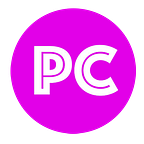Enzo Avigo Talks About “Pre Product-Market Fit” Tactics for Startups
CEO of June.so touches on what startups should and shouldn’t do when striving for product-market fit.
By Tremis Skeete, for Product Coalition
In the world of building small businesses, entrepreneurs need to be adept at managing their resources, and more importantly, make the best choices in how to apply them within in a limited amount of time.
Perhaps that’s why Enzo Avigo, CEO of June, reportedly recommends several “dos” and “don’ts” on LinkedIn on how startups can navigate their journey towards product-market fit.
Enzo is known throughout social media for his perspectives in regard to early-stage startups and their tendency to focus too much on process, documentation, and striving for the perfect product before they launch.
In the post you’re about to read, please remember that June is a product analytics business, which means the information Enzo provides is driven by the presumption that your early stage startup is working on a comparable digital product. We say this because — some or all the ideas may not work for businesses that have to adhere to more stringent rules and regulations, such as medical or financial products.
Also, keep in mind that the “dos” and “don’ts” lists are not to be taken literally. To elaborate, let’s take a look at some of the recommendations:
“One should do everything you can to increase the delivery pace.”
While this sentiment could suggest that one should “just ship it” and get the product out the door at all costs — Enzo is not implying that one should just launch a product without prior adequate testing. Of course it makes sense to perform adequate tests, but the trick is to perform enough testing and not let the idea of the “perfect product” prevent the opportunity for a “workable product” to be used by customers. After all, the objective is not just to ship, but to also learn from market feedback.
“Talk to users every day: keep sharing learnings with your team.”
This recommendation could be interpreted as a UX research task, but that is not what Enzo is referring to. “Talk to users every day” only means that one should talk to users regularly, and this activity should not be conflated with genuine UX research practices.
Enzo’s list of tactics is an earnest attempt to help others understand the value of doing the right things at the right times in order to get things done, and if he is trying to imply anything, we feel it’s the following:
- Less [not zero] planning,
- less [not zero] documentation,
- less [preferably zero] overthinking,
- more talking to customers,
- more experimentation,
- more learning, and
- more results.
Read a copy of Enzo’s LinkedIn post below to find out more:
Product management is broken for pre-PMF startups.
Slow delivery. Limited impact. Unreliable learnings.
❌ ✅ Here are the DOs and DON’Ts of PM for startups:
Traditional product management methods don’t work at startups.
In particular early stage ones.
You either realized that already, or you’re about to.
Traditional methods work for late stage companies.
FAANG and Big Co created them.
Mainly to remain user-centric when their organization scales.
But these methods don’t work well for startups.
They create unnecessary friction.
They decrease your delivery pace, and reduce your impact.
I learned that the hard way after working for years in product,
then starting my company.
Here are DOs and DON’Ts of product management in pre-PMF:
❌ DON’Ts ❌
- Build a roadmap: Especially > 3 months. Your product changes too fast.
- Write user stories & EPIC: Abstraction will slow you down.
- Do too much user research: Chances are you’ll get lost. Instead, get real.
- “Influence” people: If you have an opinion say it loud, and act on it.
- Set & forget: Building and releasing something is only the beginning.
- Listen to everyone. Find out who loves you and pick a niche.
- Don’t get stuck on strategy docs. Have a clear positioning and execute.
✅ DOs ✅
- Write problem statements. Work on key customer problems.
- Prototypes, QA, etc: Do everything you can to increase the delivery pace.
- Ship it: Just ship it, you’ll learn faster 😉
- Pick big swings: “What’s the highest impact work we can do this week”?
- Empower people: Centralized decisions slow you down.
- Get feedback on releases: Most things require an iteration.
- Start a community: until your product is ready you can start a community.
- Talk to users every day: keep sharing learnings with your team.
- Set one single goal: One goal will increase your chance of success.
Any principles I’m missing?
Hope this helps 💜
Enzo
